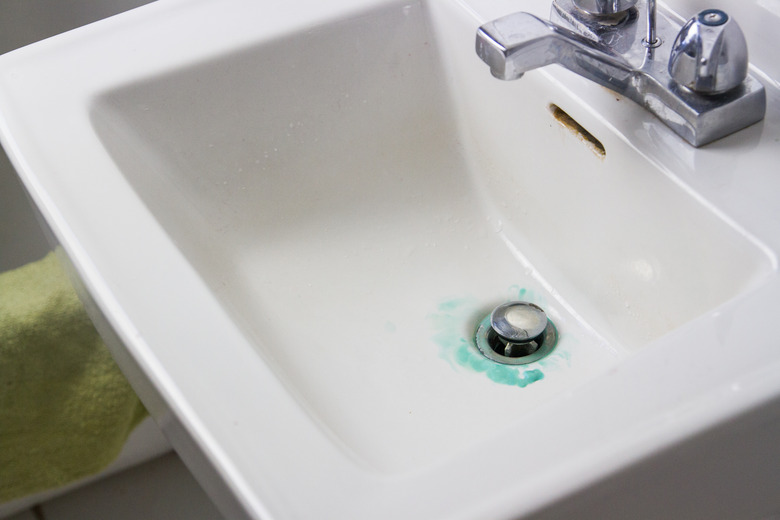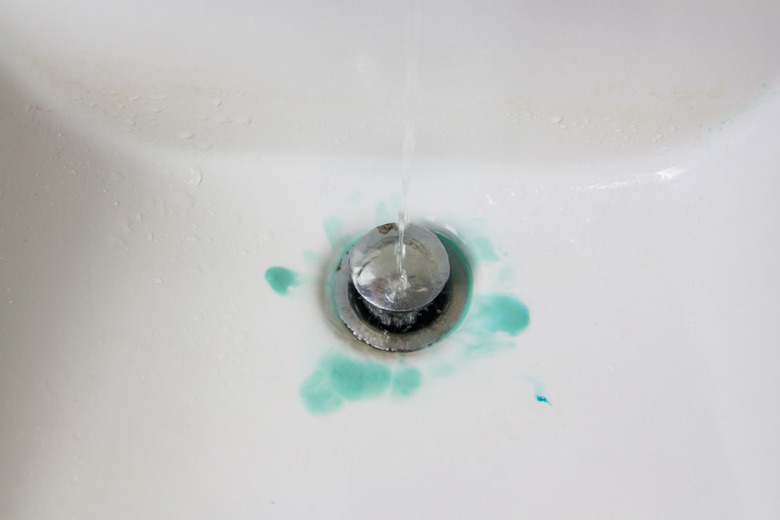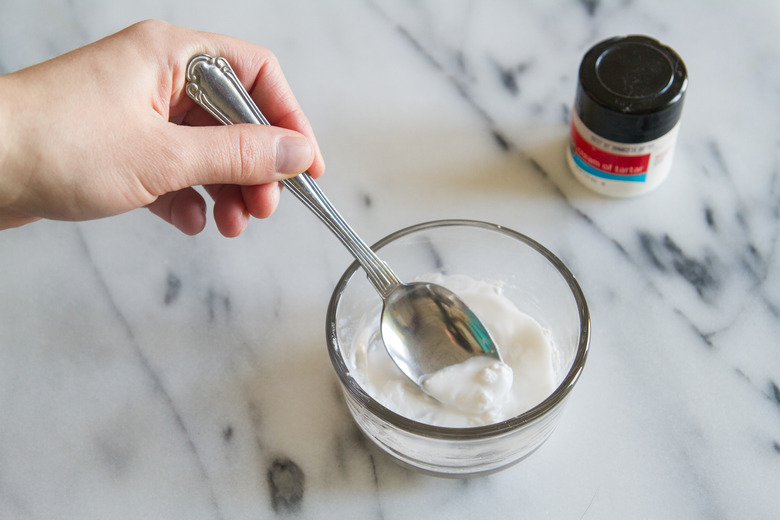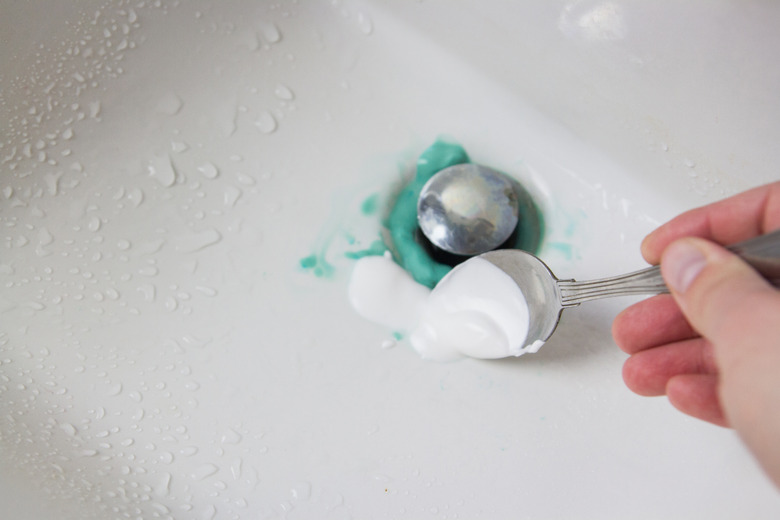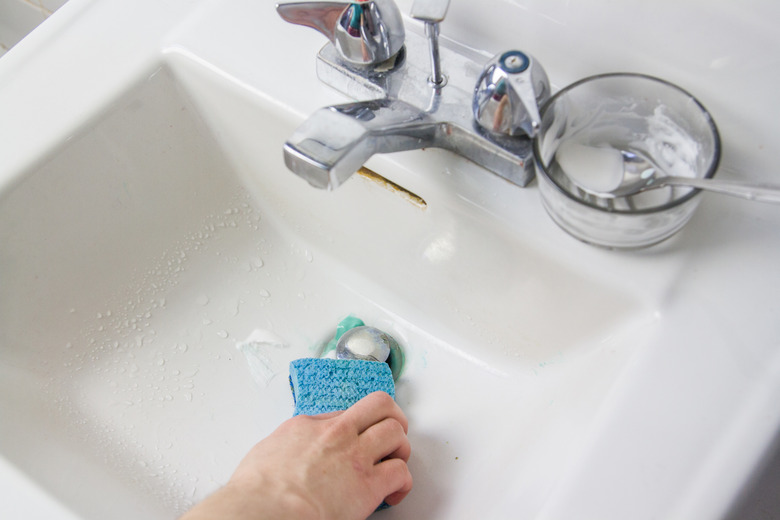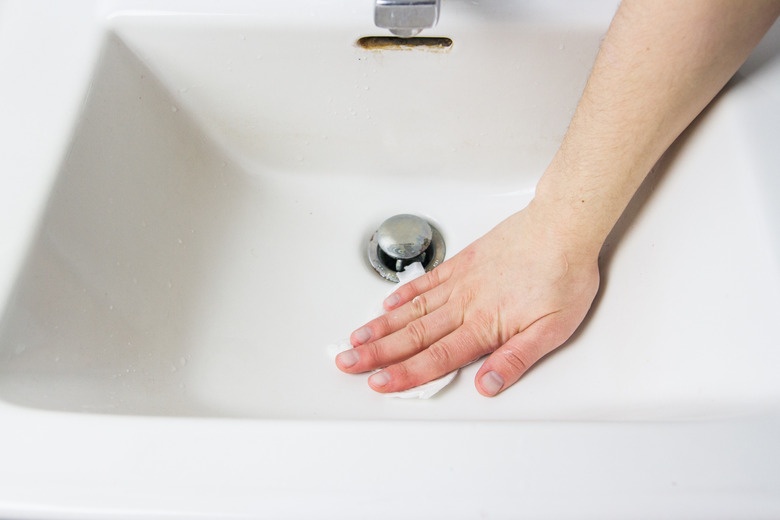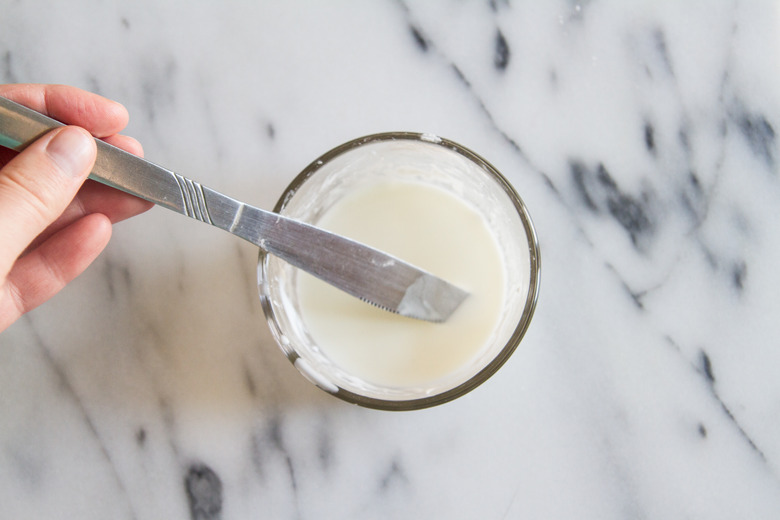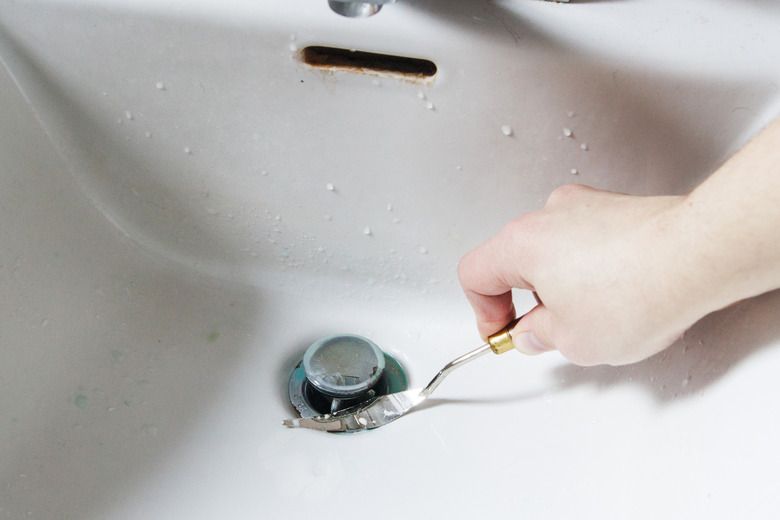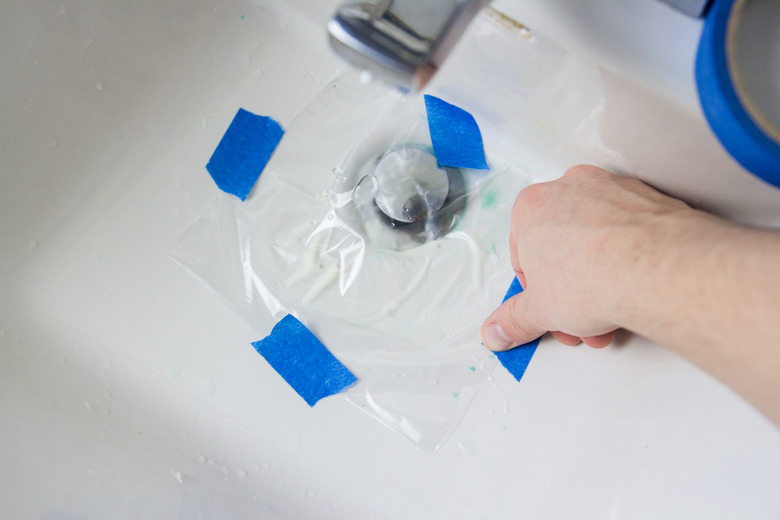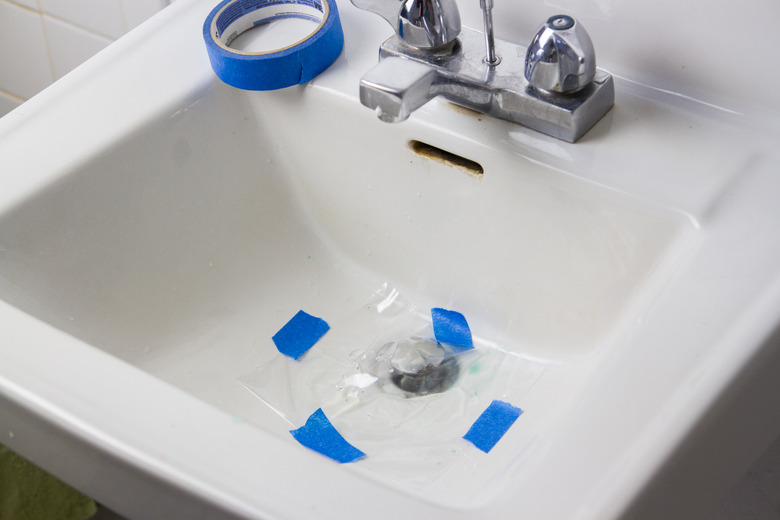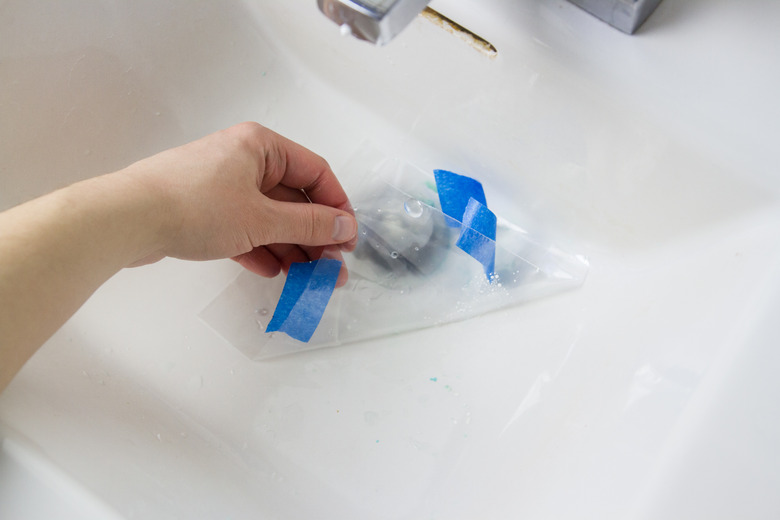How To Remove Copper Stains
Things Needed
-
Oxalic acid-based powdered cleanser or chlorine-based cleanser
-
Cream of tartar
-
Abrasive-backed sponge
-
Whiting powder
-
Ammonia
-
Plastic scraper
-
Sheet of plastic
-
Tape
Tip
Copper stains on acrylic, fiberglass, ceramic or tile may require a hearty scrubbing.
Products that remove lime and rust do not work on copper stains. Standard household bleach doesn't work either.
An abrasive agent that doesn't scratch tile, tubs or shower walls works the best when applied with some effort. Soft-scrub type cleaning agents may work, but may take more physical effort and longer to get the stain out.
Warning
If you can't get the copper stains off marble or granite, you may need to call a professional.
Copper stains don't appear in a rusty brown. They actually make a turquoise blue-green discoloration on bathroom tubs and fixtures. If you find you have copper stains on your bathroom fixtures, the water in your copper pipes might have the wrong pH, being too acidic — not good for humans to drink — and not good for your plumbing. Until you figure out the source of the copper staining, remove copper stains with the method suited to your fixtures.
Fiberglass, Tile and Cast-Iron Fixtures
Step 1
Wet the stained area down before you begin to clean it.
Step 2
Make a paste of an oxalic acid, chlorine-based cleanser or cream of tartar by mixing it with water.
Step 3
Apply the paste to the stained area. Let it sit for at least five to 10 minutes.
Step 4
Scrub the stained area with an abrasive-backed sponge. Rinse and repeat as needed until the stain is gone. This may require a little effort on your part to remove the blue-green stain from the fixture's surface.
Marble and Granite
Step 1
Dry the area on the marble or granite thoroughly.
Step 2
Mix enough household ammonia with a whiting powder or talc powder so it's the consistency of peanut butter.
Step 3
Scoop up the paste-like material onto a plastic scraper or spatula and apply it over the stain at least 1/4 to 1/2 inch thick.
Step 4
Cover the area with a sheet of plastic and tape. Apply the tape all around the edges of the plastic. The sheet of plastic should be larger than the pasted area.
Step 5
Let the poultice sit on the stain for 24 to 48 hours. The ammonia should pull the discoloration into the paste.
Step 6
Repeat as often as necessary until the area is clean.
